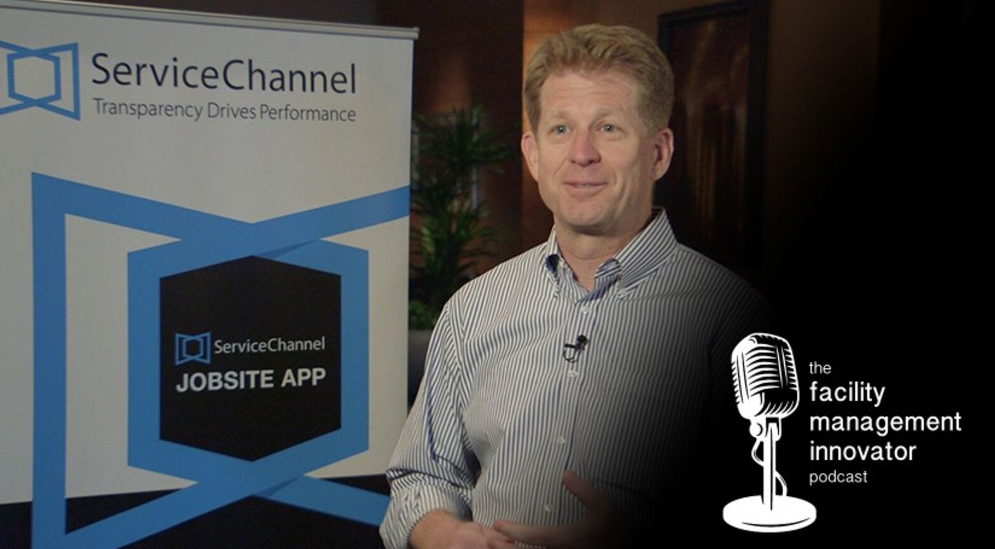Everything You Need to Know About Smart Buildings Facilities Management

Find out why smart buildings facilities management can help you reduce your energy consumption and increase your operational efficiency.
The smart building market is growing rapidly. By the end of 2025, the global smart building market is projected to grow from $117.4 billion to $143.0 billion. This growth is driven by increasing pressure on the facilities management industry to reduce energy use and enhance efficiency.
Smart building technology helps facilities managers meet these demands by giving them access to both real-time data and automated controls. These controls can respond to data or follow preset rules to adjust systems without manual intervention. Plus, managers can make smarter spending decisions using data from smart building systems.
Because your team does not need to adjust systems manually, smart technology gives your facility staff more time to focus on other work. That means more effort can be put toward improving your building’s appeal and enhancing occupant experiences.
Key Takeaways:
- Smart buildings play a key role in effective facilities management by helping managers reduce energy consumption and optimize cost savings
- Automated systems like smart HVAC and lighting adjust to real-time conditions using data from IoT sensors
- Successful smart building implementation requires clear project goals, careful preparation, phased installation, system testing, and staff training
- Industries such as retail, education, healthcare, manufacturing, and fitness use smart building systems to create safer, more comfortable environments
What Is Smart Building Facility Management?
Smart building facility management involves integrating various building systems to improve facility operation and maintenance. These systems interact with each other to provide needed data that will allow any singular building system to automate functions and adapt to changing conditions.
For example, a smart HVAC system may adjust temperature and airflow based on data from occupancy sensors. This interaction would mean that the HVAC system heats, cools, or ventilates each room only when it is in use.
Traditional facilities management relies on manual inspections based on fixed schedules. This approach limits your ability to make adjustments based on real-time conditions. So, returning to our HVAC example, if your team is scheduled to turn down the heat in the evening, you may waste energy heating an unoccupied room throughout the day.
Benefits of Smart Buildings in Facility Management
Improved Energy Efficiency
Smart buildings use Internet-of-Things (IoT) sensors to regulate lighting, heating, air conditioning, and ventilation. These sensors prompt each building system to self-adjust based on specific conditions. As a result, your facility will reduce unnecessary energy usage by aligning energy consumption with actual demand.
Cost Savings
Advanced technologies can help you realize cost savings in numerous ways. Reducing unnecessary energy usage lowers your utility bills and reduces each asset’s wear. By reducing the wear and tear on each asset, you will also lower your overall maintenance costs.
Better Occupant Experience
Automated lighting and climate controls can adjust to individual needs and occupancy levels. This means that you will protect the well-being of everyone in your facility. Customers are more likely to stay longer, and employees will be more productive.
Real-Time Monitoring
Smart building systems provide real-time data on equipment performance, energy use, indoor air quality (IAQ), and occupancy. Facilities management teams can then access this data through dashboards and alerts. This visibility means that you can react to potential issues sooner.
Predictive Maintenance & Fewer Failures
Smart sensors can monitor equipment to detect early signs of wear or malfunction. That means that facilities managers can schedule maintenance activities before failures occur. This approach is called predictive maintenance, and it is an effective way to lower repair costs and extend asset lifespans.
Operational Efficiency
Smart buildings facilities management streamlines operations across your organization. Automation systems manage lighting, HVAC, and energy management with minimal human intervention. Therefore, staff have more time to focus on higher-value tasks, and you lessen the risk of human error.
Data-Driven Decision-Making
Facility managers can use advanced analytics based on data from various systems to guide decisions. These insights can optimize energy consumption, reduce operational costs, plan maintenance operations, and maximize resource allocation. Real-time data collection can also let managers know when it’s time to pivot their strategy based on certain conditions.
Key Examples of Smart Building Technologies
| Internet-of-Things (IoT) Sensors | Small devices that are placed throughout the building to collect real-time data on factors like temperature, humidity, air quality, motion, light, and occupancy. This data is then sent to a centralized system where it can be monitored and assessed. |
| Computerized Maintenance Management Systems (CMMS) | CMMS software is used to manage building maintenance. It can help managers schedule preventive maintenance, track work orders, and manage inventory. CMMS tools often integrate with IoT sensors and BMS so that they can automatically trigger maintenance requests. |
| Building Management Systems (BMS)/Building Automation Systems (BAS) | These are centralized systems that monitor and control core building functions such as HVAC, lighting, power, fire systems, and security. They can collect data from connected devices and allow operators to automatically adjust building systems. |
| Artificial Intelligence (AI) | AI can predict equipment failures, adjust energy usage, and manage climate controls using machine learning algorithms. These algorithms leverage historical data to anticipate your future needs. |
| Smart HVAC & Lighting Systems | Smart HVAC and lighting systems can automatically respond to occupancy levels, daylight availability, and preset schedules to optimize comfort and energy efficiency. |
| Data Analytics & Dashboards | Data analytics tools present key performance indicators in a user-friendly format. Facilities managers can use these dashboards to monitor efficiency, identify issues, and make informed decisions. |
How to Implement Smart Building Technology
1. Define Project Goals
First, specify what you want to accomplish by installing smart technology and assess your building’s structure to verify that it can handle what you want to implement. Check your building’s network bandwidth, wiring, and internet reliability, as many smart devices require stable connectivity. Add upgrades to your project to-do list if they are needed to implement the technology you want.
2. Prepare Your Facility
Upgrade your building systems as needed so that they are ready for your new devices. For wireless devices, conduct a site survey to validate signal strength and avoid dead zones. For wired devices, confirm that all necessary ports and cable runs are in place. Factor in space for control panels, gateways, and backup power if required.
After any changes, document what was done so that your maintenance personnel are aware. Some changes may affect how and when they perform their preventive maintenance work.
3. Install & Configure Devices
Begin with a phased installation process that starts in one area or with one system. This approach gives you time to correctly configure each device according to vendor guidelines. Start with the most important devices or the ones that are the easiest to install.
4. Test System Functionality
After installation, test each component to confirm proper operation. Validate that devices collect accurate data, respond to commands, and interact with other systems as expected. Testing gives you a chance to detect and correct any potential issues before roll-out.
5. Train Staff
Once you’re confident that your staff can use your devices, train them to do so. Tailor your training materials based on role so that your team members understand the value of the technology and use it appropriately. Make sure that you offer both initial training and ongoing refreshers to keep them up-to-date.
Example Use Cases of Smart Facilities Management Across Industries
Retail
Retailers use smart building technology to lower energy costs by managing lighting and climate based on foot traffic. Smart technology can also help retail businesses optimize space utilization by giving managers actionable insights about how customers move throughout the store.
Education
Schools can use smart building technology to create safer and healthier environments while supporting their sustainability efforts. Automated HVAC systems can manage temperature and air quality in classrooms, which helps improve student focus and reduces the risk of illnesses linked to poor ventilation.
Healthcare
Like schools, healthcare facilities must maintain proper ventilation to reduce the risk of airborne illnesses. Smart building systems can also control air pressure, temperature, and filtration in surgical suites and isolation rooms where environmental conditions may be critical.
Manufacturing
In manufacturing, automated systems help maintain stable conditions by controlling temperature and humidity in materials storage and production areas. Stable conditions reduce the risk of potential product defects caused by environmental fluctuations.
Spa & Fitness
Spa and fitness centers use smart building technology to create comfortable environments for guests. Smart systems can automatically adjust lighting, temperature, and ventilation to match the needs of specific spaces such as saunas, pools, treatment rooms, or exercise studios.
Smarter Buildings Start With Smarter Software
Smart building systems generate large amounts of data, and you need a simple way to organize it all. The right CMMS platform can help you keep track of all of your building data so that you can make the most of your technology.
ServiceChannel offers a CMMS solution for this purpose.
Our platform can help you make maintenance more effective using real data. When sensors detect performance issues, ServiceChannel can automatically generate maintenance work orders so you can correct the issue before it causes downtime.
Book a demo today to see how it works.



